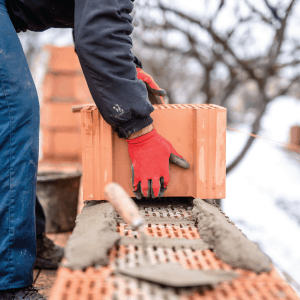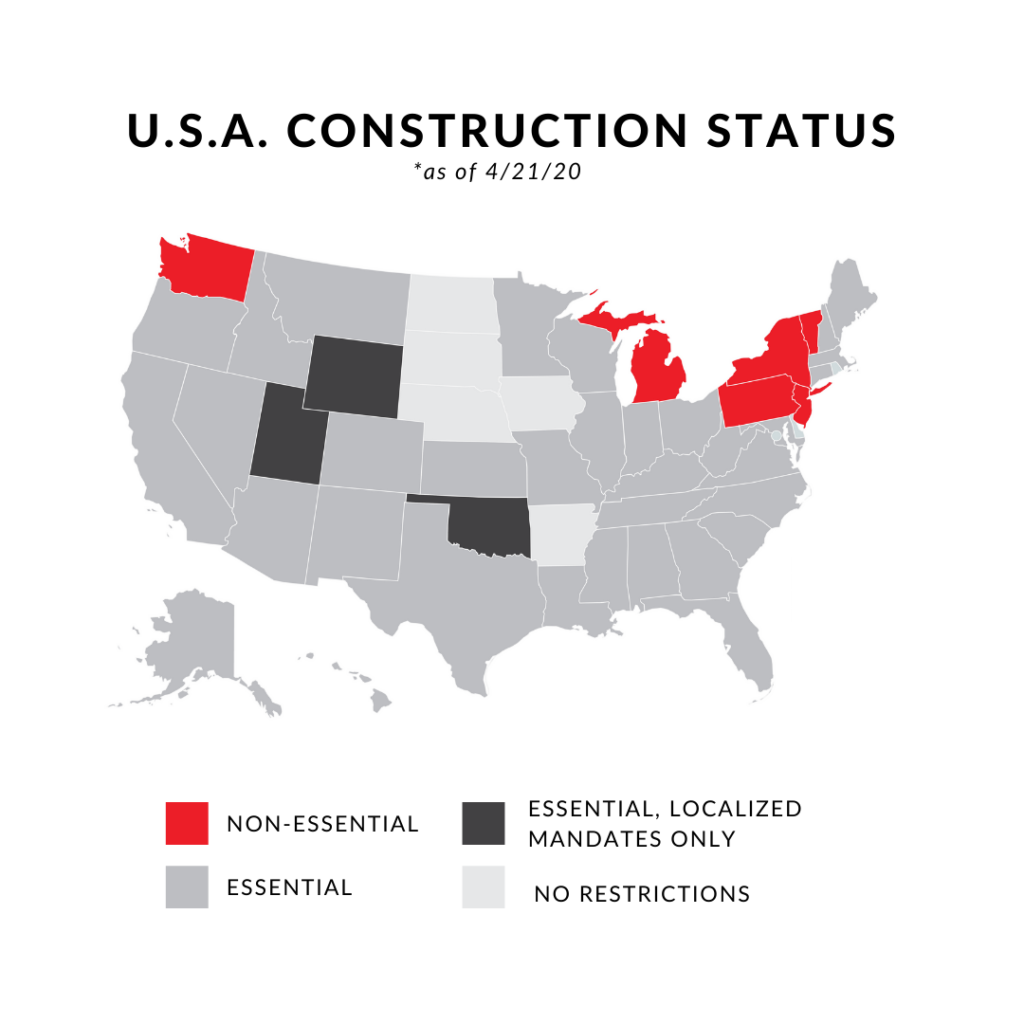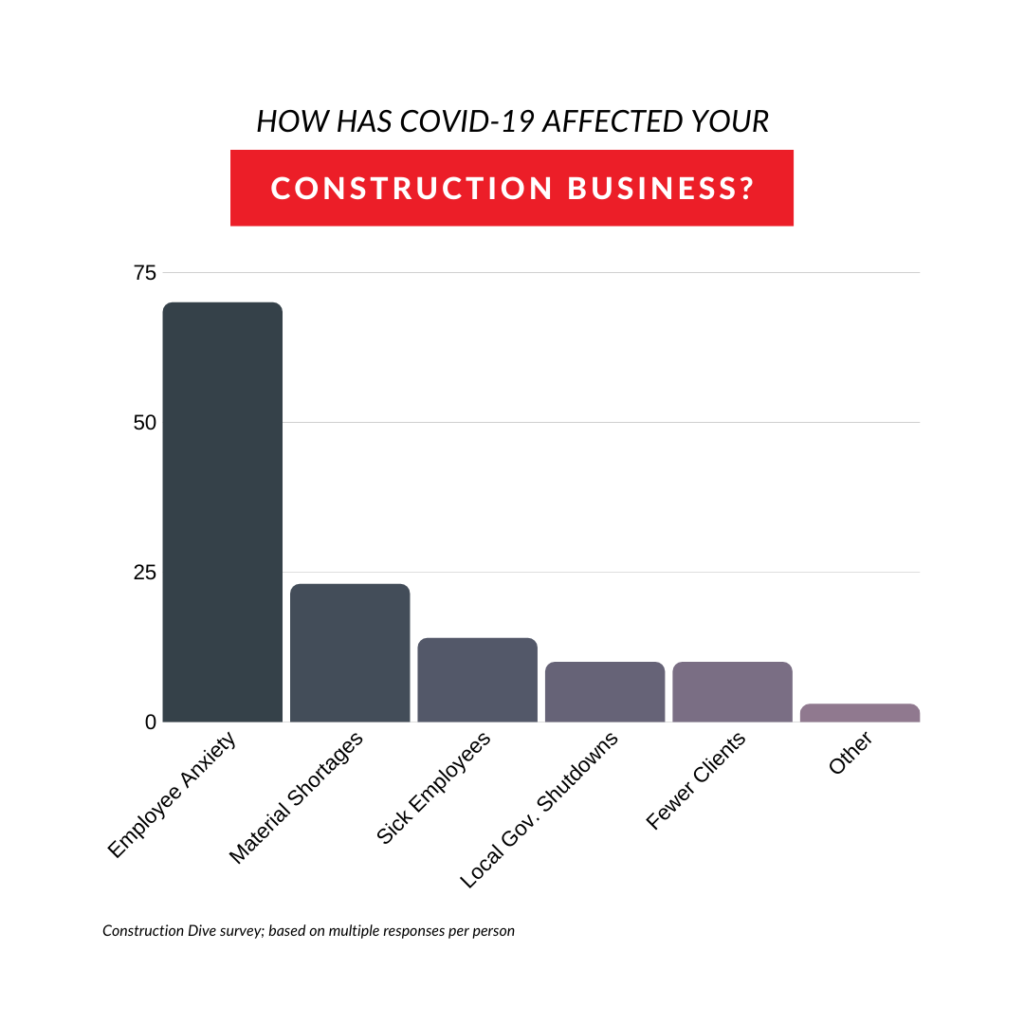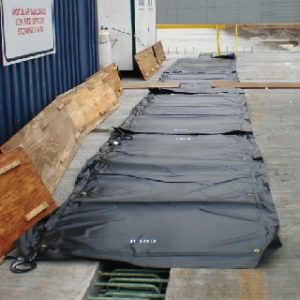
The Current State of The Construction Industry
As of the publication date of this article (4/21/20), many state governments have instituted “stay and home” and “shelter in place” orders. These orders can affect construction differently from state to state depending on that state’s specific mandates. Here are the specifics of what that currently looks like (for an up-to-date list, look here):
States where construction is deemed “non-essential” (excluding public infrastructure, housing, and healthcare projects) :
- Michigan
- New Jersey
- New York
- Pennsylvania
- Washington
- Vermont
States where construction is “essential”:
- Alabama
- Alaska
- Arizona
- California
- Colorado
- Connecticut
- Delaware
- District of Columbia
- Florida
- Georgia
- Hawaii
- Idaho
- Illinois
- Indiana
- Kansas
- Kentucky
- Louisiana
- Maine
- Maryland
- Massachusetts
- Minnesota
- Mississippi
- Missouri
- Montana
- Nevada
- New Hampshire
- New Mexico
- North Carolina
- Ohio
- Oregon
- Rhode Island
- South Carolina
- Tennessee
- Texas
- Virginia
- West Virginia
- Wisconsin
States with only localized restrictions, construction deemed “essential”:
- Oklahoma
- Utah
- Wyoming
States with no restrictions:
- North Dakota
- South Dakota
- Nebraska
- Iowa
- Arkansas
Challenges for the Construction Industry During COVID-19
While construction is protected as “essential” in most states, that doesn’t mean it’s business as usual. The industry has experienced and is expected to face some challenges in the coming months. Here are just a few of those challenges and some suggested solutions:
Employee Physical and Mental Wellbeing
The good news is that for those employed outside of healthcare, the risk of COVID-19 transmission is low (OSHA).
However, according to a survey conducted by Construction Dive, anxiety among employees has had the greatest impact on construction work.
This is, of course, understandable. With a virus spreading, an uncertain future for the economy, and ever-changing policy, who wouldn’t be anxious?
Many organizations have found it helpful to develop Toolbox Talks specifically to discuss pandemic-related issued. These talks may include hygiene reminders, facts about COVID-19, and ongoing company adjustments.
There should also be clear guidelines in place for employees exposed to COVID-19 or experiencing any symptoms of the virus. At the very least, these employees should remain home for at least 14 days.
The goal is to be transparent and helpful and to avoid spreading any hysteria.
Employee Availability
While COVID-19 hasn’t necessarily had a huge direct impact on the construction industry, ongoing restrictions are expected to have a large indirect impact on projects.
For example, school and public transportation closures could make it tricky for employees to make it to the job site, even where construction isn’t restricted.
Additionally, while there may be no hiccups in a main workforce, subcontractor availability may cause major delays and having to put projects on hold.
Supply Chain
Because this pandemic is global, quarantines are slowing down or shutting down factories and plants around the world. This is especially true in China where estimates suggest approximately 30% of U.S. construction products are sourced. Some U.S. construction firms rely on China for up to 80% of their supplies.
Companies my soon be paying a premium as they scramble to find supplies.
It’s recommended that contactors seek out alternative suppliers in the U.S. or other countries that haven’t experienced massive halts similar to China.
Lenders and Clients
An additional challenge construction companies are likely to face in the coming weeks and months is lack of commitment from lenders and clients. The uncertainty of the current climate is likely to make these parties hesitant to finance projects.
To mitigate this challenge, contractors should so everything they can to get ahead of lead times. They should also review their insurance policies which may cover situations that arise due to shut downs and delays.
Contracts
Even with limitations cause by the current pandemic, contractors may still be contractually obligated to complete projects on time and within the agreed upon budget.
Contractors should review contracts and take note of any force majeure provisions that allow work to be suspended or terminated when certain extenuating circumstances arise. While the future is uncertain, it’s likely that there will be many valid claims made by contractors in the future.
Guarding Against Uncertainty
Ultimately, the future remains fairly uncertain. However, construction companies can best weather the storm by careful adjusting, planning and preparing. Companies should have contingency plans for any outcome. What’s the protocol if there’s a virus outbreak nearby? What if a worker displays COVID-19 symptoms? What if the worksite is shut down? What steps can be taken to increase the bottom line when the uncertainty passes?
Companies should frequently and thoroughly plan and prepare for every worst-case scenario. Preparedness provides organizations with structure and some semblance of assurance in uncertain times.
Using Heat to Bolster Business
Now is a better time than ever to prepare to make the most of what would otherwise be an “off” season for construction. Powerblanket products make it possible for contractors to continue projects all through the winter. That means making up for any projects cancelled by the current uncertainty.
Powerblanket heated blankets and wraps keep walkways safe for personnel, concrete curing at optimal temperatures, and supplies from getting damages and functioning properly. Otherwise unworkable conditions turn into business as usual!
Curious to see how Powerblanket can meet the unique needs of your industry?





